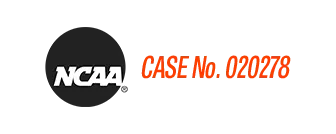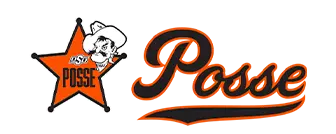Oklahoma State University Athletics

John Smith: Taking Down Teaching
February 21, 2018 | Cowboy Wrestling
By Emily Lingenfelter
OSU Athletics Communications
In the standard vest and some configuration of orange and black, John Smith can be found matside any given weekend at Gallagher-Iba Arena in the fall.
Through the fall on Tuesday nights, though, Smith was in a room generally reserved for postgame press conferences … teaching.
Smith didn't see the availability for many coaching classes at OSU. He said the tools and information to get a young coach started are crucial, and the outline for his course could seemingly provide that.
Judge Kim Parrish assisted with coordinating the course. He was granted unrestricted access to Smith and the Cowboys during the 2004-05 season, which was when he observed the methods and tendencies that he said make Smith an elite coach.
"During practices in the Cowboy wrestling room, he resembles a professor walking slowly through an advanced graduate chemistry lab, examining 30 complex experiments," Parrish said. "He brings those lessons home in this class."
OSU offered a coaching minor beginning in 2013, which is when Smith became interested in formal coaching education. College of Education Assistant Professor Timothy Baghurst asked Smith to speak to his classes on a few occasions, and Smith always obliged.
"Swing to about 2015, and coach approached me and said, 'I would like to see a class taught on how to develop wrestling coaches at the high school level because a lot of wrestling coaches lack the fundamental education needed to be successful,'" Baghurst said.
The story was one Baghurst said he has heard several times. Smith didn't only share his concern but also proposed what he believed could be part of a solution.
Smith wanted to instruct the course.
"I see a real need for coaching education," Smith said. "I noticed that outside of a few classes Dr. Baghurst was teaching, we just needed an opportunity for student-athletes and students who plan on going into coach and teaching to get a level of education as far as what to expect in the profession."
Baghurst described the process of adding a class to the curriculum at Oklahoma State. He said there are those created as trial courses and those that take a little more time and are granted full course catalog status, which was what Smith intended for his class. The addition of a course can take up to a year, so Smith and Baghurst began planning in the summer of 2015.
In addition to quizzes, exams and participation, Smith scheduled a host of guest lecturers throughout the semester. Speakers included team doctor Tom Allen; volunteer assistant Isaac Jordan and recruiting coordinator Tyler Caldwell; Perry High School principal Nancy Parrish and wrestling coach Ronnie Delk; OSSAA member Todd Goolsby, and Oklahoma State Regent Andy Lester.
Speakers taught students weekly about issues that might surface for a high school wrestling coach, most of which Baghurst and Smith said can be applied to any other high school coach. Allen spent an evening lecturing on the importance of dietary knowledge and awareness. Lester discussed potential legal scenarios in coaching, and Parrish and Delk addressed interactions between coaches and administration. Other topics included managing staff, coaching conduct, ethics and professional standards, wrestling technique and budgeting.
There are a number of factors young coaches don't consider when starting in the profession. Smith said he sees this course a small step in helping students avoid missteps. The guest speakers he selected played a huge role in relaying those messages.
"We had a lot of speakers throughout the semester that added a lot to the class, not just hearing about wrestling but hearing about situations that can occur," Smith said. "Anything from problems with athletes to legal problems that can arise in athletics at the high school and junior high levels."
Smith said he believed his athletes in particular might view coaching differently after taking a course like this.
"It's a common misconception that I just come to practice every day, and I coach wrestling for two hours," Smith said. "They're finding out in here that there's a lot more that goes on behind the scenes in coaching and recognizing that if they're going to have a long, established career, going to the room for two or three hours a day is a very small part of it. We talk a lot about real, practical situations more so than book situations, and that's what they need to be prepared for."
The wrestling room is a part of his job, though, which was something else students in the course experienced. Teaching wrestling technique was of the three field assignments for the course. In groups of three, students taught and demonstrated a wrestling move in a class presentation that included a video, written outline and demonstration, which was given in the Cowboy wrestling room.
Although the field assignment was supplemental to the course, the guest lectures were crucial for detailed instruction, and Baghurst said it's because of Smith the school has access to these people. He said it enhances the program after one semester.
"We're developing a reputation for making sure students receive not only quality instruction but are essentially learning from legends," Baghurst said. "Coach Smith starts that. He was the first to come over and say, 'I want to be involved in this because I care about the profession I'm in.' And that's huge because of his credentials. You can't put a value on that."
Baghurst said to have a coach approach him requesting to teach a course is unheard of, especially to teach in the midst of a season.
Smith not only reached out, but also when Baghurst informed him the school didn't have the money to add another instructor to the faculty.
"He said, 'The money isn't an issue. I want to teach it anyway,'" Baghurst said.
Two-time NCAA champion Dean Heil said it demonstrates how much Smith cares about wrestling and its future.
"It shows how much Coach Smith is dedicated to this sport and this school," Heil said. "He's teaching the class, not because anyone asked him to. He's here because he thinks it's a great idea and understands there are a lot of undereducated or unprepared coaches out there. This is him taking the initiative to share some of his knowledge about coaching and try to get people prepared and make aware of what to expect when they go into this field."
The coaching degree program at OSU had its inaugural class of majors in the fall, with more than half of the Cowboy starting lineup enrolled and 21 of 25 seats filled. Because Smith's class is an upper-level course, only students pursuing a coaching minor were admitted, but Baghurst expects a full class going forward.
"I think that his class will grow and grow," Baghurst said. "If you look at the class and just see Smith is teaching it, what does that mean? But I think that once people start to realize he's offering a class, I think its going to be very hard to … I think we're going to have to turn people away."
Parrish supported Baghurst's sentiment regarding the value of a Smith-instructed course.
"Taking a class from John Smith on coaching is like studying physics with Albert Einstein or art with Leonardo Da Vinci," Parrish said. "For a world-class athlete to excel in coaching at the highest level is more the exception than the rule, but Coach Smith is able to accomplish it at Oklahoma State because he is a teacher at heart."
Smith said his coaching experience has helped him make the transition to teaching in a classroom setting and especially plays into the practicality of the course.
Three-time All-American Heil agrees, saying it's only a different type of coaching.
"A coach's job is obviously to teach, but it's different in a sense that he's not teaching for competition," Heil said. "He's teaching to give you knowledge for your future. He takes it more slowly and really explains stuff."
Although Smith's intentions for the course stem from his passion for the coaching wrestling and Oklahoma State, he is methodical and said he sees the course as somewhat of an opportunity.
"I feel a real commitment to Oklahoma State wrestling," Smith said. "I want to give anyone who wants to coach wrestling in the state of Oklahoma a head start, if I can. I want to help Oklahoma State maintain its status as a top-tier program. Several of these students in my class will go into coaching wrestling, and they'll coach in Oklahoma."
OSU Athletics Communications
In the standard vest and some configuration of orange and black, John Smith can be found matside any given weekend at Gallagher-Iba Arena in the fall.
Through the fall on Tuesday nights, though, Smith was in a room generally reserved for postgame press conferences … teaching.
Smith didn't see the availability for many coaching classes at OSU. He said the tools and information to get a young coach started are crucial, and the outline for his course could seemingly provide that.
Judge Kim Parrish assisted with coordinating the course. He was granted unrestricted access to Smith and the Cowboys during the 2004-05 season, which was when he observed the methods and tendencies that he said make Smith an elite coach.
"During practices in the Cowboy wrestling room, he resembles a professor walking slowly through an advanced graduate chemistry lab, examining 30 complex experiments," Parrish said. "He brings those lessons home in this class."
OSU offered a coaching minor beginning in 2013, which is when Smith became interested in formal coaching education. College of Education Assistant Professor Timothy Baghurst asked Smith to speak to his classes on a few occasions, and Smith always obliged.
"Swing to about 2015, and coach approached me and said, 'I would like to see a class taught on how to develop wrestling coaches at the high school level because a lot of wrestling coaches lack the fundamental education needed to be successful,'" Baghurst said.
The story was one Baghurst said he has heard several times. Smith didn't only share his concern but also proposed what he believed could be part of a solution.
Smith wanted to instruct the course.
"I see a real need for coaching education," Smith said. "I noticed that outside of a few classes Dr. Baghurst was teaching, we just needed an opportunity for student-athletes and students who plan on going into coach and teaching to get a level of education as far as what to expect in the profession."
Baghurst described the process of adding a class to the curriculum at Oklahoma State. He said there are those created as trial courses and those that take a little more time and are granted full course catalog status, which was what Smith intended for his class. The addition of a course can take up to a year, so Smith and Baghurst began planning in the summer of 2015.
In addition to quizzes, exams and participation, Smith scheduled a host of guest lecturers throughout the semester. Speakers included team doctor Tom Allen; volunteer assistant Isaac Jordan and recruiting coordinator Tyler Caldwell; Perry High School principal Nancy Parrish and wrestling coach Ronnie Delk; OSSAA member Todd Goolsby, and Oklahoma State Regent Andy Lester.
Speakers taught students weekly about issues that might surface for a high school wrestling coach, most of which Baghurst and Smith said can be applied to any other high school coach. Allen spent an evening lecturing on the importance of dietary knowledge and awareness. Lester discussed potential legal scenarios in coaching, and Parrish and Delk addressed interactions between coaches and administration. Other topics included managing staff, coaching conduct, ethics and professional standards, wrestling technique and budgeting.
There are a number of factors young coaches don't consider when starting in the profession. Smith said he sees this course a small step in helping students avoid missteps. The guest speakers he selected played a huge role in relaying those messages.
"We had a lot of speakers throughout the semester that added a lot to the class, not just hearing about wrestling but hearing about situations that can occur," Smith said. "Anything from problems with athletes to legal problems that can arise in athletics at the high school and junior high levels."
Smith said he believed his athletes in particular might view coaching differently after taking a course like this.
"It's a common misconception that I just come to practice every day, and I coach wrestling for two hours," Smith said. "They're finding out in here that there's a lot more that goes on behind the scenes in coaching and recognizing that if they're going to have a long, established career, going to the room for two or three hours a day is a very small part of it. We talk a lot about real, practical situations more so than book situations, and that's what they need to be prepared for."
The wrestling room is a part of his job, though, which was something else students in the course experienced. Teaching wrestling technique was of the three field assignments for the course. In groups of three, students taught and demonstrated a wrestling move in a class presentation that included a video, written outline and demonstration, which was given in the Cowboy wrestling room.
Although the field assignment was supplemental to the course, the guest lectures were crucial for detailed instruction, and Baghurst said it's because of Smith the school has access to these people. He said it enhances the program after one semester.
"We're developing a reputation for making sure students receive not only quality instruction but are essentially learning from legends," Baghurst said. "Coach Smith starts that. He was the first to come over and say, 'I want to be involved in this because I care about the profession I'm in.' And that's huge because of his credentials. You can't put a value on that."
Baghurst said to have a coach approach him requesting to teach a course is unheard of, especially to teach in the midst of a season.
Smith not only reached out, but also when Baghurst informed him the school didn't have the money to add another instructor to the faculty.
"He said, 'The money isn't an issue. I want to teach it anyway,'" Baghurst said.
Two-time NCAA champion Dean Heil said it demonstrates how much Smith cares about wrestling and its future.
"It shows how much Coach Smith is dedicated to this sport and this school," Heil said. "He's teaching the class, not because anyone asked him to. He's here because he thinks it's a great idea and understands there are a lot of undereducated or unprepared coaches out there. This is him taking the initiative to share some of his knowledge about coaching and try to get people prepared and make aware of what to expect when they go into this field."
The coaching degree program at OSU had its inaugural class of majors in the fall, with more than half of the Cowboy starting lineup enrolled and 21 of 25 seats filled. Because Smith's class is an upper-level course, only students pursuing a coaching minor were admitted, but Baghurst expects a full class going forward.
"I think that his class will grow and grow," Baghurst said. "If you look at the class and just see Smith is teaching it, what does that mean? But I think that once people start to realize he's offering a class, I think its going to be very hard to … I think we're going to have to turn people away."
Parrish supported Baghurst's sentiment regarding the value of a Smith-instructed course.
"Taking a class from John Smith on coaching is like studying physics with Albert Einstein or art with Leonardo Da Vinci," Parrish said. "For a world-class athlete to excel in coaching at the highest level is more the exception than the rule, but Coach Smith is able to accomplish it at Oklahoma State because he is a teacher at heart."
Smith said his coaching experience has helped him make the transition to teaching in a classroom setting and especially plays into the practicality of the course.
Three-time All-American Heil agrees, saying it's only a different type of coaching.
"A coach's job is obviously to teach, but it's different in a sense that he's not teaching for competition," Heil said. "He's teaching to give you knowledge for your future. He takes it more slowly and really explains stuff."
Although Smith's intentions for the course stem from his passion for the coaching wrestling and Oklahoma State, he is methodical and said he sees the course as somewhat of an opportunity.
"I feel a real commitment to Oklahoma State wrestling," Smith said. "I want to give anyone who wants to coach wrestling in the state of Oklahoma a head start, if I can. I want to help Oklahoma State maintain its status as a top-tier program. Several of these students in my class will go into coaching wrestling, and they'll coach in Oklahoma."
Lefty for three! #basketball #collegebasketball #ncaambb
Saturday, November 22
Oklahoma State vs. Nicholls | Condensed Game Highlights (11-22-2025)
Saturday, November 22
Christian Coleman dunk! #basketball #collegebasketball #ncaambb
Saturday, November 22
Cowboy Basketball Media Availability | Oklahoma State Postgame vs. Nicholls State (11-22-2025)
Saturday, November 22














